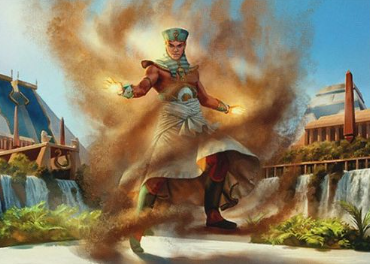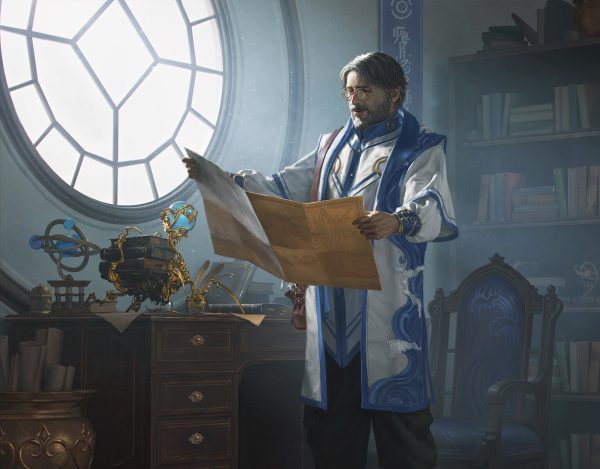Are you a Quiet Speculation member?
If not, now is a perfect time to join up! Our powerful tools, breaking-news analysis, and exclusive Discord channel will make sure you stay up to date and ahead of the curve.
And so, the sun sets on yet another Draft format. The Brothers' War (BRO) rewarded tight play and creative deck building, providing many lessons to drafters. To say farewell to this archetype, we'll do what we always do: make a few lists and give out some meaningless awards.
Archetype Power Rankings
- Red-Based Aggro: The red aggro decks have access to a strong arsenal of tools, boasting two of the format's top commons in Excavation Explosion and Scrapwork Mutt. Penregon Strongbull plays well with almost all of the best red cards. Aggressive decks rule the day, and red has the best tools to implement this plan. Especially when supported by the synergies of its most threatening one drop, Goblin Blast-Runner
- Multi-Color Stalwart: Towards the end of BRO's life cycle, the low ALSA of this powerful enabler made it trivially easy to collect enough to turbo-charge whatever synergies we'd already amassed. We could start in UW Soldiers, RB Sacrifice, or just collect enough glue pieces, all while snagging a few copies of Citanul Stalwart to build whatever deck came our way. Being able to maximize all of the unearth cards means access to an incredible power level.
- White-Based Aggro: The white aggro decks aren't exceptionally powerful, but the cards go late and the flyers make for good finishers. If we're free falling, this is the best ripcord. Warlord's Elite[card] is a powerful tool when enabled with one- and two-drops. [card]Phalanx Vanguard is an efficient two-drop and Airlift Chaplain is an evasive threat that will often draw a card. That package provides a reasonable base for the aggressive white decks, especially if you can cherry-pick top cards from a supporting color.
- "The Scripted Archetypes:" As we discussed two weeks ago, these decks are not particularly well-supported. If it's open, it's open, however, our power-level will be heavily dependent on uncommons and rares. The major lesson from this format is that sticking to the script won't always provide you the best performance. Simply put, these decks are not what the format is about.
The Uncommon Common
It's hard to explain how much this card does in the format. It is both one of the most frightening aggressive threats and one of the best answer to aggressive starts. The colorless front-size compares favorably with many of the four-drops in the format. Even non-white decks can unearth it with Energy Refractor, Citanul Stalwart, or a splashed land. In fact, it's a top-performing common in decks that don't even include white mana. The unearth oftentimes represents free damage, and the tokens it creates, free cardboard.
We always want this in our Stalwart decks. It puts aggressive decks over the top, and is excellent in the midrange decks as well. Furthermore, it plays out with the complexity of an uncommon. It reminds me of Lingering Souls, in that it offers a lot of pieces for us to use, which inherently provides agency. This card lets us make the decisions we want to make, whether we're buying time or putting pressure on opponents. It's the number one reason why white was such a successful color in this format.
The Gust-Walker Trophy

For the third consecutive set, we are giving the Gust-Walker Trophy to the format's most powerful common two-drop. The preseason rankings favored Argothian Sprite and Powerstone Engineer, but after the first week, this felt like a lock.
Scrapwork Mutt fixes our hand while applying pressure. This common construct easily trades off before coming back or more. The opportunity to rummage twice helps awkward hands come together. It helps smooth out Stalwart decks, and keep the pressure flowing for aggressive decks. Mutt pitching Mutt is one of my favorite ways to open a game in this format. This is the number one glue card in the set, and something we should be picking very high.
Common Removal Power Rankings
- Excavation Explosion: This Lightning Bolt can go to the face, but the powerstone is what puts it over the top. Using EE to ramp into Mishra's Juggernaut or Tocasia's Onulet is an extremely powerful sequence.
- Overwhelming Remorse: This is the only other common removal spell in the top tier. Exile anything is enormous in a format with unearth and Wurmcoil Engine. The card is filthy when you get the discount.
- Epic Confrontation: The buff on the fight spell feels very powerful and usually leads to some extra damage, but creature sizing is something we have to keep in mind as we build with this card in mind.
- Prison Sentence: Scry 2 feels powerful at any point in the game. While [card]Arrest[card] effects are vulnerable, this one played well in the format.
- Disfigure: Cheap interaction against aggro decks, plus it kills Citanul Stalwart. Some formats don't care for this effect, but it's excellent here.
- Powerstone Fracture: We need to build our deck to support this card. Making powerstones, tokens, or unearthing creatures that will survive combat are amongst the easiest ways to do this.
- Unleash Shell: Five mana, kill your thing, shock your face, swing in for lethal. I ended a lot of games this way. The five mana, however, is quite expensive.
- Weakstone's Subjugation: Not quite the blue Swords to Plowshares. This card was fine when you needed removal. Probably not as good as Desynchronize and Machine over Matter. Blue does not have great interaction in the format.
Scourge of the Format
To be honest, this format didn't have a real scourge. That's a testament to a well-balanced set. There were no cycling decks, as there were in Ikoria, and while the uncommons are generally powerful, none were as impactful as the Wingmantle Chaplain fiasco of yesteryear.
I considered the turn one Goblin Blast-Runner as a nominee. It elicits plenty of groans and promises plenty of damage. I considered the Stalwart into Howling Mine opening, but that felt too niche. In truth, there was only one correct answer.
Yes, it feels like cheating to put a rare in this spot, but this card ruined games of Magic. And yes, we did already spend an entire article discussing the overpowered nature of this card, but it's the single card we hoped to dodge the most. If we never played against it, that was a good day, and that's pretty much the definition of the award.
Format Grade
The Brothers' War is a polarizing format, but in my opinion it's a solid A-. The format is challenging and rewards innovation. It evolved a couple of times over its lifetime. Early on it was aggressive, and it aged like most of us: becoming slower, but more interesting with time. Unearth, powerstones, and prototype offered a ton of choices, while the retro artifacts gave the set some interesting wrinkles. It made us build decks without relying on the scripted archetypes, and we're probably better for it.
Next week, we'll be introducing Phyrexia: All Will Be One (ONE). The spoilers are already out, and the set looks extremely powerful. Farewell, BRO. Thanks for the games.





